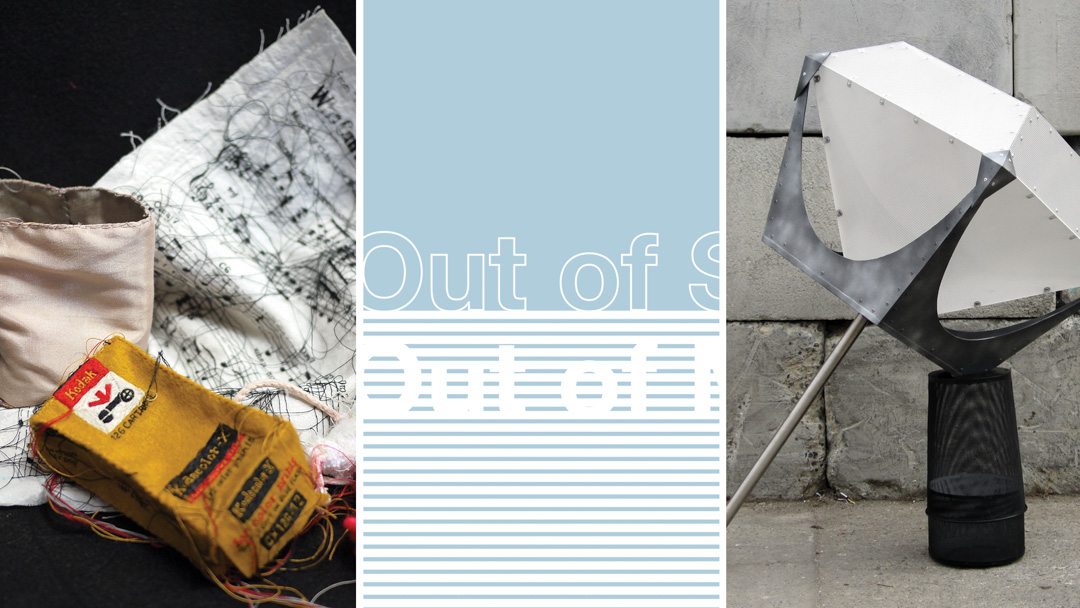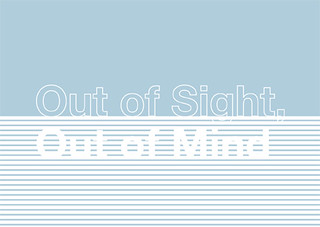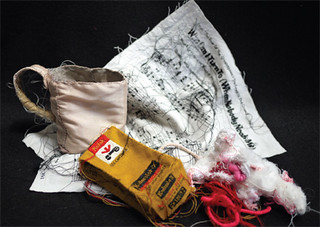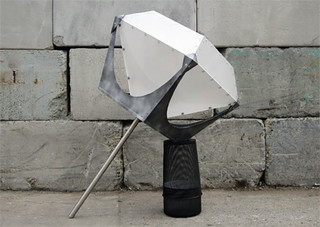
August 20, 2011
FOR IMMEDIATE RELEASE
When:
Reception-Friday, September 23, 2011, 5-9pm
Reception-Saturday, September 24, 2011, 1-5pm
Where:
Art Studio located at 503 Tunnel Ave.
Environmental Learning Center Gallery at 401 Tunnel Ave.
Admission is free and open to the public, all ages welcome, wheelchair accessible.
San Francisco, CA–The Artist in Residence Program at Recology San Francisco will host an exhibition and reception for current artists-in-residence Lauren DiCioccio, Abel Rodriguez, and Kaiya Rainbolt on Friday, September 23rd, from 5-9pm and Saturday, September 24, from 1-5pm. This exhibition will be the culmination of four months of work by the artists who have scavenged materials from the dump to make art and promote recycling and reuse.
|
DiCioccio draws parallels between her work and 17th century Dutch and Flemish still life vanitas paintings which present mundane objects—an extinguished candle, a fading flower—as symbols for death and the brevity of life. Similarly, DiCioccio’s interpretations of objects found in the dump, such as travel postcards, books, and record albums, speak to the transitory nature of 20th century pleasures. Other works include incandescent light bulbs, sheet music, greeting cards, as well as fabricated dead mice and rabbits. Works are similar in scale to their source objects and threads are left dangling in the detailed embroidery, as if the artworks were slowly unraveling before us. DiCioccio received her BA at Colgate University and is represented by Jack Fischer Gallery in San Francisco. |
 Abel Rodriguez: Out of Sight, Out of Mind Abel Rodriguez: Out of Sight, Out of MindIn large-scale collages and mixed-media sculpture, Abel Rodriguez explores exploding and imploding forms, progress and destruction, and how the perception of these conditions can be shaped by what is visible or hidden. Rodriguez, who received his MFA at Yale in painting and printmaking, is interested in the sculptural aspect of painting, describing his 2-D collages, which incorporate found photos, negative space from magazine advertisements, and drawings, as “skins” for his sculptural forms. Some sculptures are free-standing, while others maintain a relationship with the wall and their painterly lineage. Collages and sculptures are exhibited together as pairs, bound visually through perspective, line, and color. Implicit in Rodriguez’s work is the idea of mutability. He describes fragments of objects as “words that can be negotiated, arranged and rearranged into endless visual and communicative statements,” and he has approached the things he has gathered from the Public Disposal and Recycling Area in this manner, deconstructing and reconstructing, ordering and shifting. Rodriguez embraces change through his working process as well as through his use of materials, such as tape, which allows for quick modification and restructuring. Even finalized sculptural forms still express the potential to shift, morph, or be perceived in new contexts. |
|
Rainbolt’s sculptures explore ideas about fine jewelry’s cultural role as a symbol of affluence, and put this in contrast with other less flashy definitions of accomplishment or happiness. The scale of the pieces, such as a five foot tall diamond earring, makes them the ultimate status symbols, yet on closer examination there is more going on below the surface of these works. Each sculpture has been crafted in a way that allows access to the interior of the piece where one can see scavenged mementos and items symbolic of what Rainbolt views as truly valuable. By juxtaposing these giant gems with things that may have had greater emotional meaning for those that once possessed them, the works question what is of importance in our day to day lives. Rainbolt is currently a student at San Francisco City College. |
| The Artist in Residence Program at Recology San Francisco is a one-of-a-kind program established in 1990 to encourage the conservation of natural resources and instill a greater appreciation for the environment and art in children and adults. Artists work for four months in studio space on site, use materials recovered from the Public Disposal and Recycling Area, and speak to students and the general public. Over one-hundred Bay Area artists have completed residencies. Applications are accepted annually in August. |
 Lauren DiCioccio: Who Can I Turn To (When Nobody Needs Me)
Lauren DiCioccio: Who Can I Turn To (When Nobody Needs Me) Kaiya Rainbolt: Upscale
Kaiya Rainbolt: Upscale